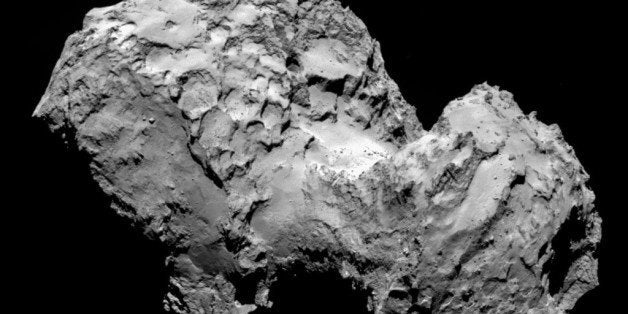
Mix the aroma of rotten eggs with a whiff of horse stables, throw in a hint of ammonia and formaldehyde, and voila! You've got eau de Comet 67P/Churyumov-Gerasimenko.
Scientists at the University of Bern in Switzerland recently discovered the comet's pungent scent by analyzing a mixture of molecules detected in the comet's coma, the cloud of particles and gases around the space rock's nucleus.
The molecules were collected by an instrument aboard the Rosetta spacecraft, which has been flying in tandem with the comet. The instrument, called ROSINA, consists of two mass spectrometers and a pressure sensor.
(Story continues below)
Along with ammonia and formaldehyde, the molecules behind the comet's stench include hydrogen sulphide, hydrogen cyanide, methanol and sulphur dioxide, New Scientist reported.
"What's surprising is we already have extremely rich chemistry at this distance from the sun," Kathrin Altwegg, a researcher at the university who runs the ROSINA instrument, told New Scientist.
The icy comet is more than 400 million kilometers (about 250 million miles) from the sun, the researchers said in a written statement, so they weren't expecting to detect such a wide variety of molecules until the space rock neared the sun and warmed up.
"This all makes a scientifically enormously interesting mixture in order to study the origin of our solar system material," Altwegg said in the statement.
To learn even more about the comet, the Rosetta probe is scheduled to deploy its robotic lander, Philae, to the surface of the space rock on Nov. 12.

